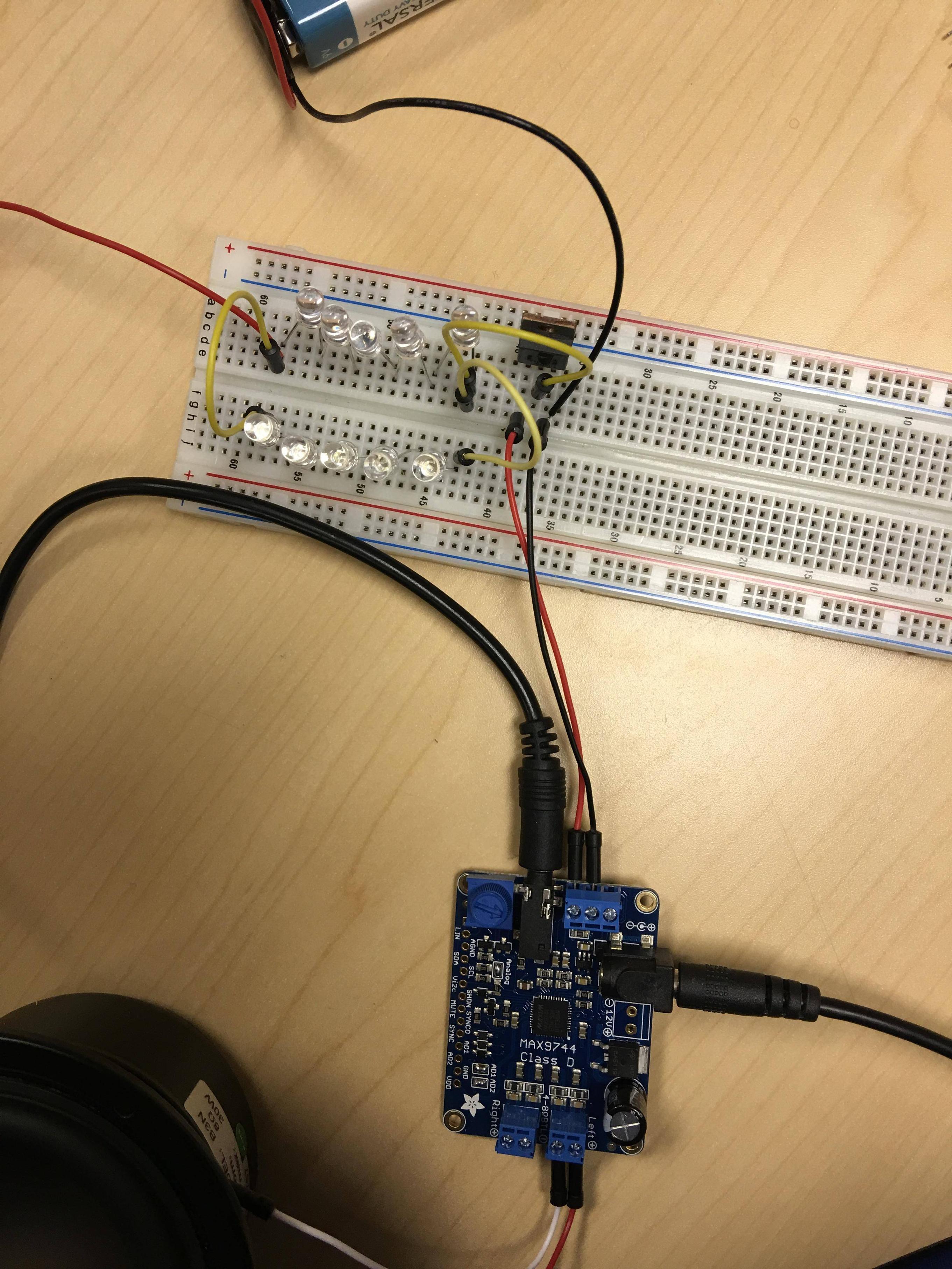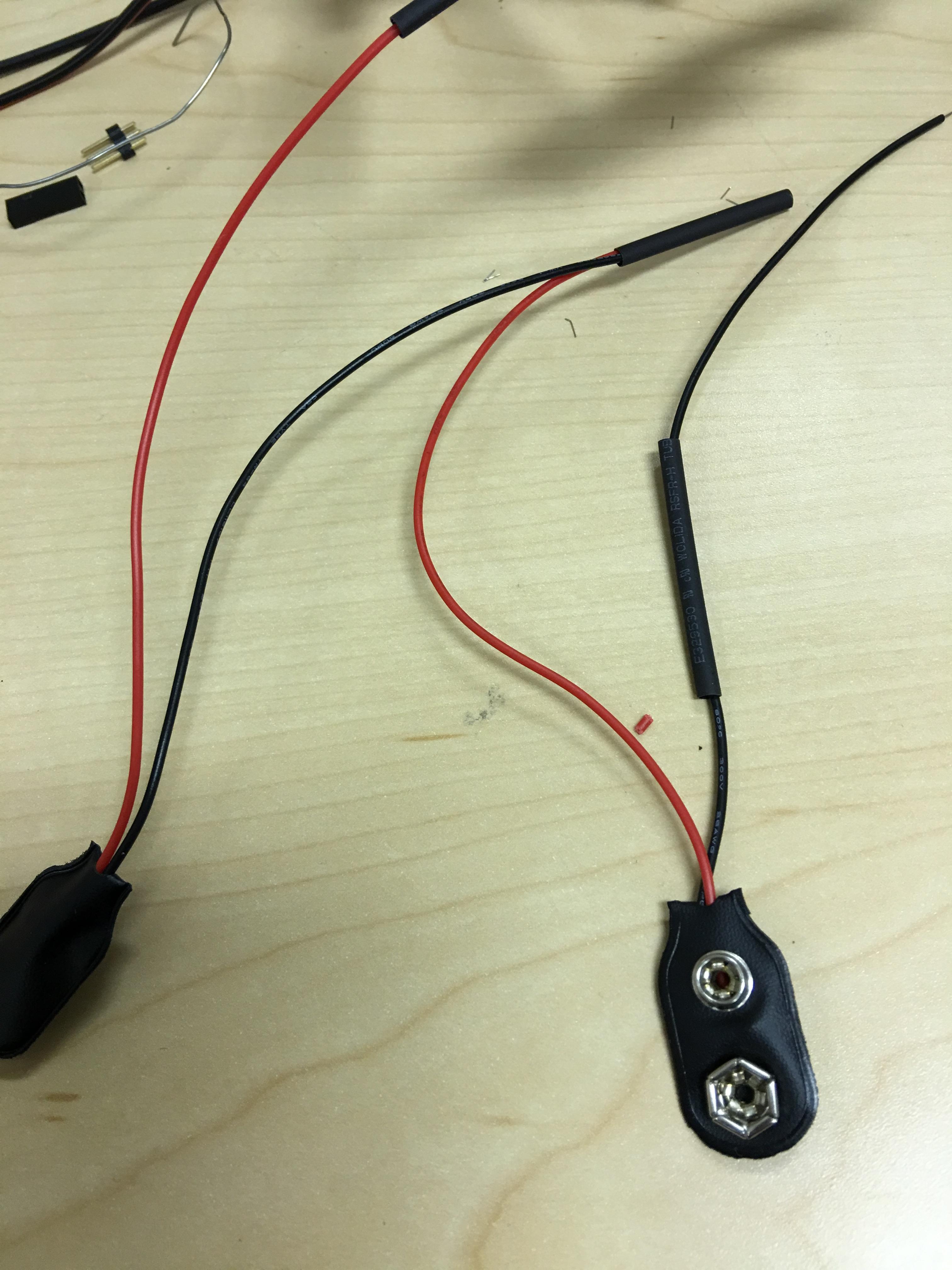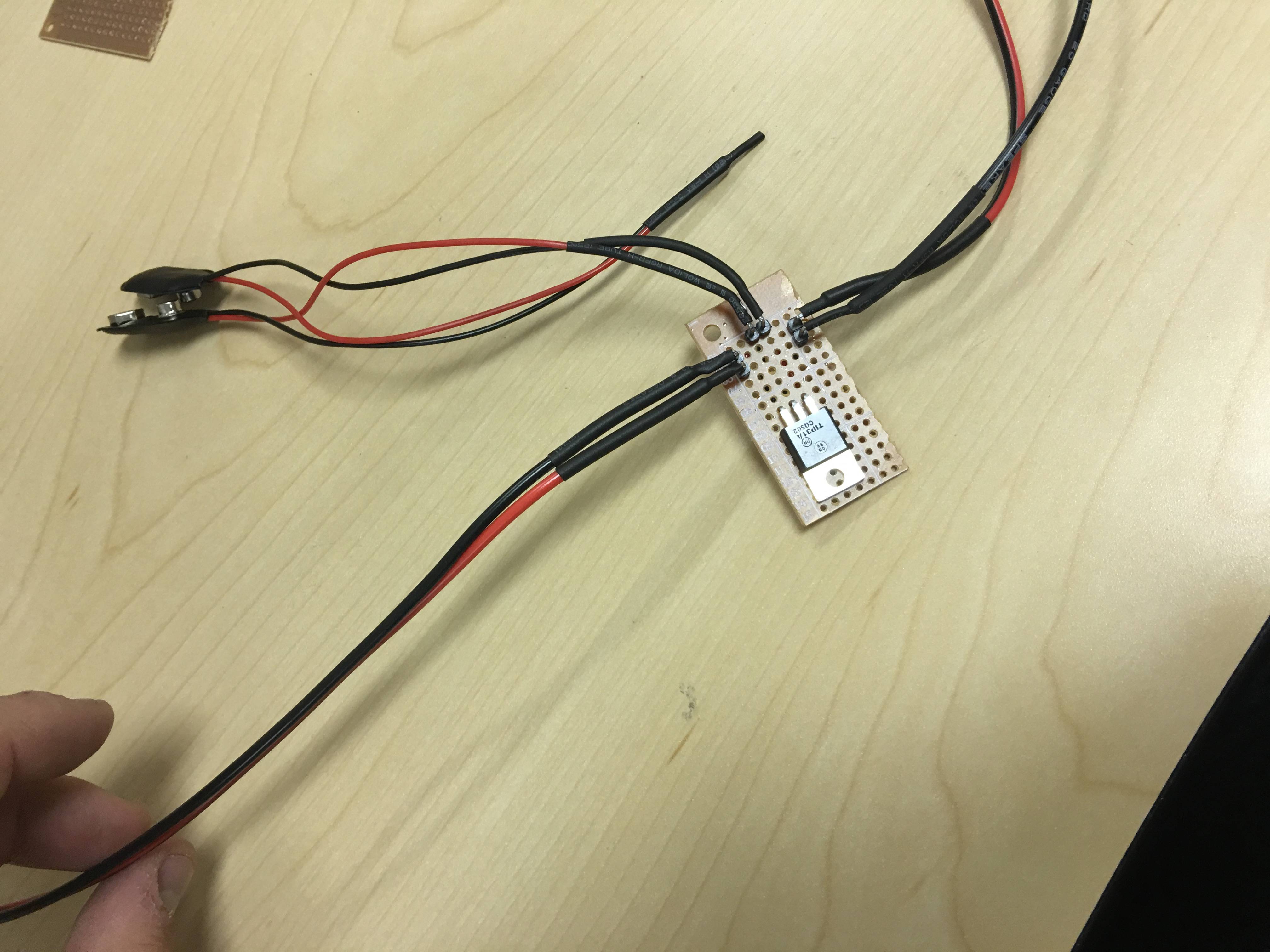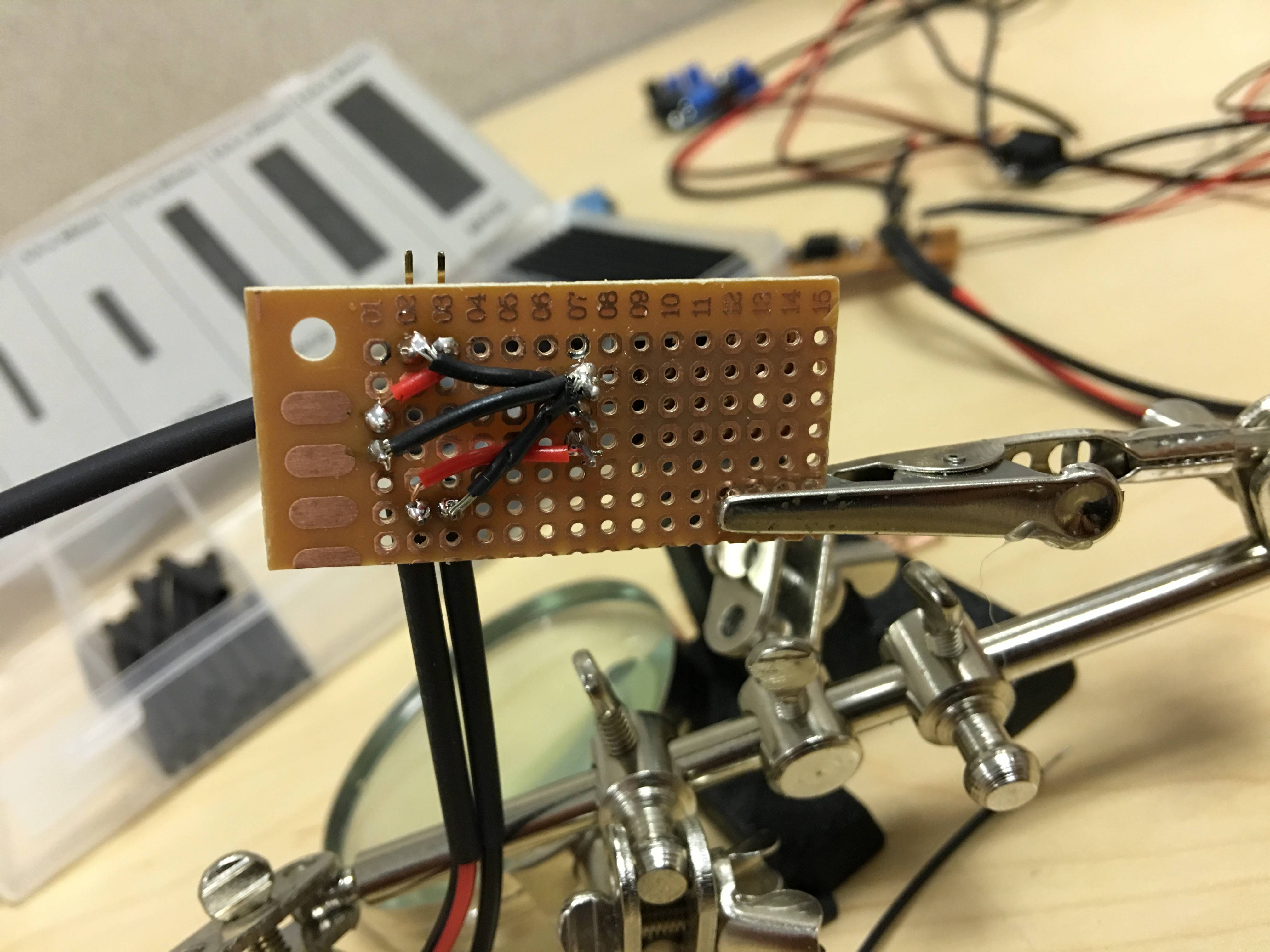Circuitry
This project revolves heavily around electrical concepts. If you are new to electronics, I recommend using this website to help you understand more about them, if you would like to learn more.
Amplifier Audio Output
In order to route the audio output from the amplifier, we are going to want to create some wires that can attach to the audio posts included in this build. To do this, we will solder on the gold ring connectors included with the posts. Simply solder the wires on as shown below (left, and then add heatshrink to these connections to keep them safe from failure (shown below, right). The assembly section has instructions on how to attach these to the audio posts.
LED Circuit
The circuit that allows the LEDs to be timed with the sound is built using just one transistor and a set of inputs. Here is a circuit diagram to help understand how it works:

The input that comes from the amplifier will be that which comes from the terminal block soldered to the audio input of the amplifier. We do this because when using the audio output of the amplifier, the low frequency that is used to activate the TIP31 transistor is filtered out by the amplifier, so we use the computer's output instead.
Here is how the circuit should look setup on a breadboard:

Note: this circuit uses the output from the speaker. Use the output from the amplifier instead.
Once you have the circuit setup, test it out to make sure it works. Refer to the testing page for more info on testing this circuit.
After you know the circuit works, you can make some improvements to it if you want to. For my final circuit I used 6 LEDs, 3 red, 3 blue in parallel with each other.

Note: this uses 5 each instead of 3, but the principle is the same.
If you do different colors, make sure that you adjust for the different voltages using the appropriate resistors for the color and number of LEDs. Additionally, I recommend increasing the voltage of the system by connecting two batteries in series, as shown below.

After the circuit is all tested and good, you can start soldering it together. The end circuit should like these pictures:


The input opposite the transistor is for power from the LEDs, the input to the left of the power is for the audio, and the input to the right of the power is for the LEDs. Make sure that this circuit follows the same paths as the circuit established in the breadboard.
LEDs
You will want to wire up the LEDs in series as shown below:

Make sure to connect the LEDs anode-to-cathode (long leg to short leg).
Full Wiring
After all of the soldering and circuits are finished, you will want to wire everything together with the lengths of wire required to traverse the pipes in mind. Make sure that all of your connections are well made, run the proper length for the pipes, and that they have the proper insulation on them (heatshrink or electrical tape).
Make sure to wire up the speaker from the audio post up to the top of the pipe. You can solder the connections directly onto the speaker's terminals. Also, make sure that you are using the conduit as a hiding place for your wires that traverse up the pipes.
Since the audio output from the aux cord shares a common ground for each side of the speaker, we will use this space to implement a power switch for the LED circuit. Wire the switch as shown below:

Note: make sure to have the wire coming from the audio jack to the switch, then splitting out to each individual circuit.
Once you are finished with all of the wiring, you can test your final product and move onto the finishing touches!


